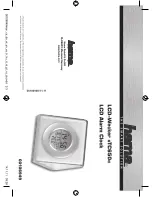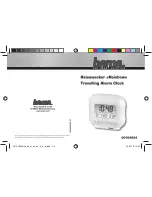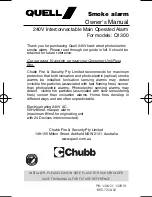
Phone: +44 (0)1282 463 770
Fax: +44 (0)1282 463 771
Email: info@radaltechnology.com
Radal Technology Ltd
Unit 1 Webber Court
Billington Road
Burnley
Lancashire BB11 5UB
England
Issue Date: January 2008
Web: www.radaltechnology.com
Cig-Arrête Master Flame Detector with Voice Alarm (Part No CSA-FDV)
Coverage
The flame detector has a field of view of 120
o
. The
table below provides a guide to the coverage area
for a given installed height.
When positioning the sensor, avoid the following conditions, which may otherwise lead to an unwanted alarm:
Fires or other flames
Mercury lamps, sterilization lamps, halogen lamps (not glass protected)
Direct or reflected sunlight
Electrical sparks e.g. welding
Radiation sources
Lightening
Positioning
The detector can be mounted in any orientation on a wall or ceiling. For optimum detection and security from vandalism/
tampering, mount the detector as high as possible. In its vertical plane, the higher the detector is mounted, the greater the
coverage at near to ground level. Unless the ceiling is high, mounting the detector on a wall will provide greater coverage.
However, the successful detection of a flame or match can be compromised if the source of light is shielded from view e.g.
a persons back is shielding the light. In this instance, consider mounting two or more detectors on opposite walls.
Tips: Pointing the detector down at 45 degrees will fully utilize the field of view. Likewise, when the detector is mounted in
the corner of a wall, pointing diagonally across the room, detection coverage is also optimised.
General
During normal operation, the red alarm LED may periodically flash. During an alarm condition, the same LED will pulse con-
tinuously for a period of 5 minutes following its last activation.
Height Coverage Height Coverage
Metres (x)
Metres (y)
Feet (x)
Feet (y)
1 3.5 3 10
2 7 6 20
3 10 9 31
4 14 12 42
5 17 15 52
6 21 18 62
Precautions for use
The detector emits ultraviolet radiation in operation. When using two or more de-
tectors at the same time in close proximity, care should be taken to avoid optical
interference.
Do not use in humid environments where surface condensation is likely, and avoid
icing.
Do not drop or allow the detector to sustain a strong shock
Keep the optical surfaces clean. Surface contamination will reduce sensitivity. Pe-
riodically clean with a cotton bud and alcohol.




















